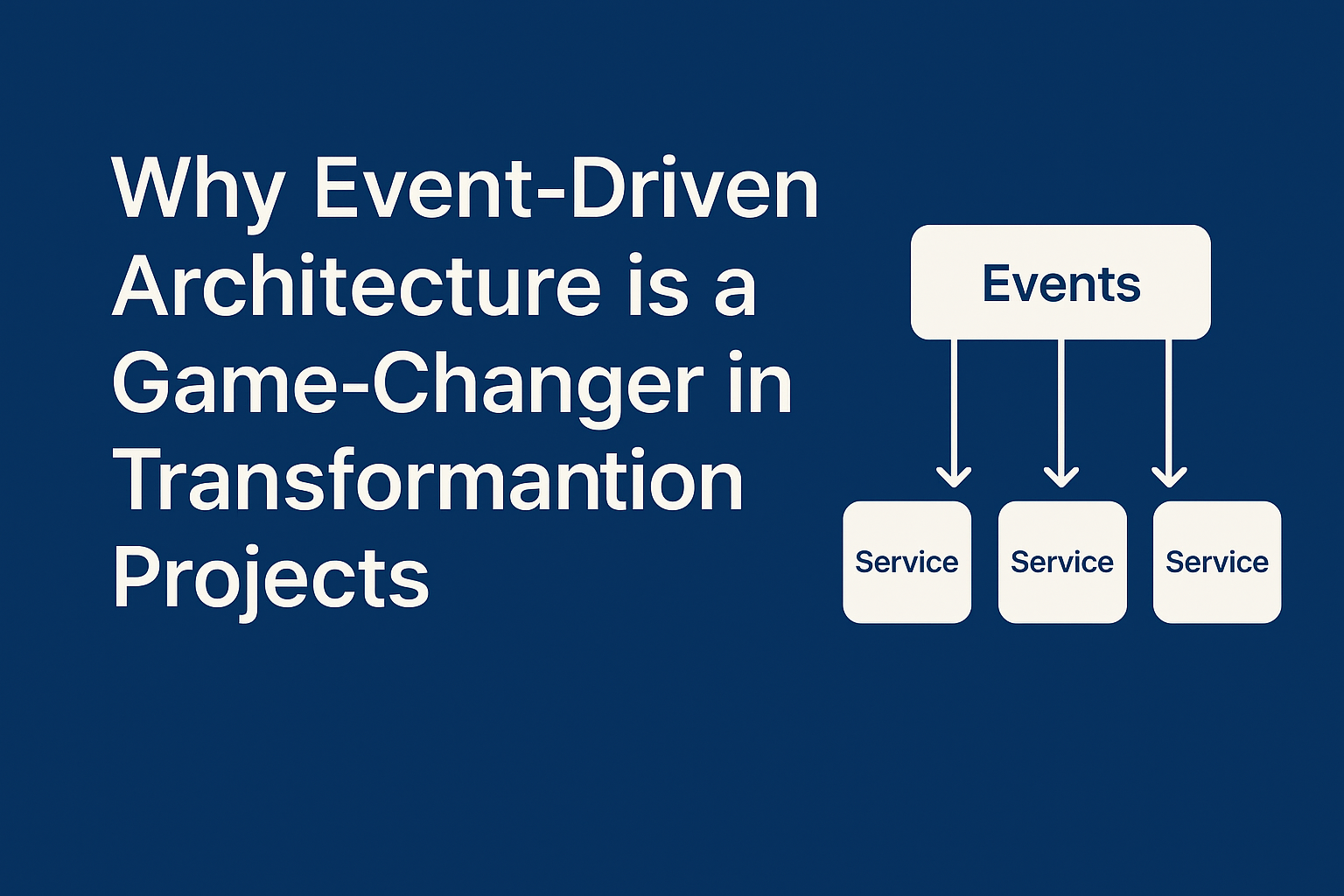In today’s world of real-time expectations, growing data, and dynamic digital systems, traditional architectures often struggle to keep up. That’s why Event-Driven Architecture (EDA) is gaining momentum as a core enabler of modern digital transformation.
In this post, I’ll explore what EDA is, why it matters in transformation projects, and how it can help organizations build faster, more scalable, and resilient systems.
What is Event-Driven Architecture?
Event-Driven Architecture is a software design pattern where applications communicate via events — changes in state, such as “Order Placed” or “Payment Processed”.
Instead of directly calling other services, event producers simply emit events, and event consumers independently react to them. This loose coupling makes systems more flexible and easier to evolve.
Why EDA is Crucial for Digital Transformation
- Loosely Coupled Systems
In transformation projects, flexibility is key. With EDA, systems are modular and can be updated or replaced independently. This reduces risk and speeds up delivery. - Real-Time Responsiveness
Today’s users expect instant feedback. EDA supports real-time flows where systems respond immediately to events, whether it’s a customer action or a backend change. - Scalability
As traffic grows, EDA allows services to scale independently. Technologies like Kafka or Pub/Sub can handle millions of events per second across distributed systems. - Flexibility and Extensibility
Adding a new service doesn’t require changes to existing systems. New consumers can simply subscribe to relevant events and start processing without rework. - Resilience and Fault Isolation
In traditional architectures, one failed service can cause a chain reaction. In EDA, failures are isolated. Events are stored and replayed, making recovery smoother and more reliable.
Common Use Cases
- E-commerce: real-time inventory updates, order lifecycle events, and customer activity tracking
- Finance: fraud detection, transaction alerts, and compliance auditing
- IoT: sensor data streaming and reactive monitoring
- Microservices: service coordination, inter-service messaging, and event sourcing
Popular Tools and Technologies
Some common tools used in Event-Driven Architectures include:
- Apache Kafka – distributed event streaming platform
- RabbitMQ – message broker for asynchronous communication
- Google Cloud Pub/Sub – managed event ingestion service
- AWS EventBridge, SNS, SQS – Amazon’s native event messaging tools
- Apache Pulsar, NATS, and Redis Streams – other strong event processing alternatives
Final Thoughts
Digital transformation requires more than just new interfaces or modern infrastructure. It demands systems that are agile, scalable, and built to adapt. Event-Driven Architecture provides a foundation for such systems, enabling faster time to market, more resilient design, and deeper integration across platforms.
If you’re leading or supporting a transformation initiative, EDA should be part of your strategic architectural choices — not just for technical benefits, but for long-term business agility.
Let’s Discuss
Have you used Event-Driven Architecture in your projects? What results or challenges did you encounter? I’d love to hear your insights.

